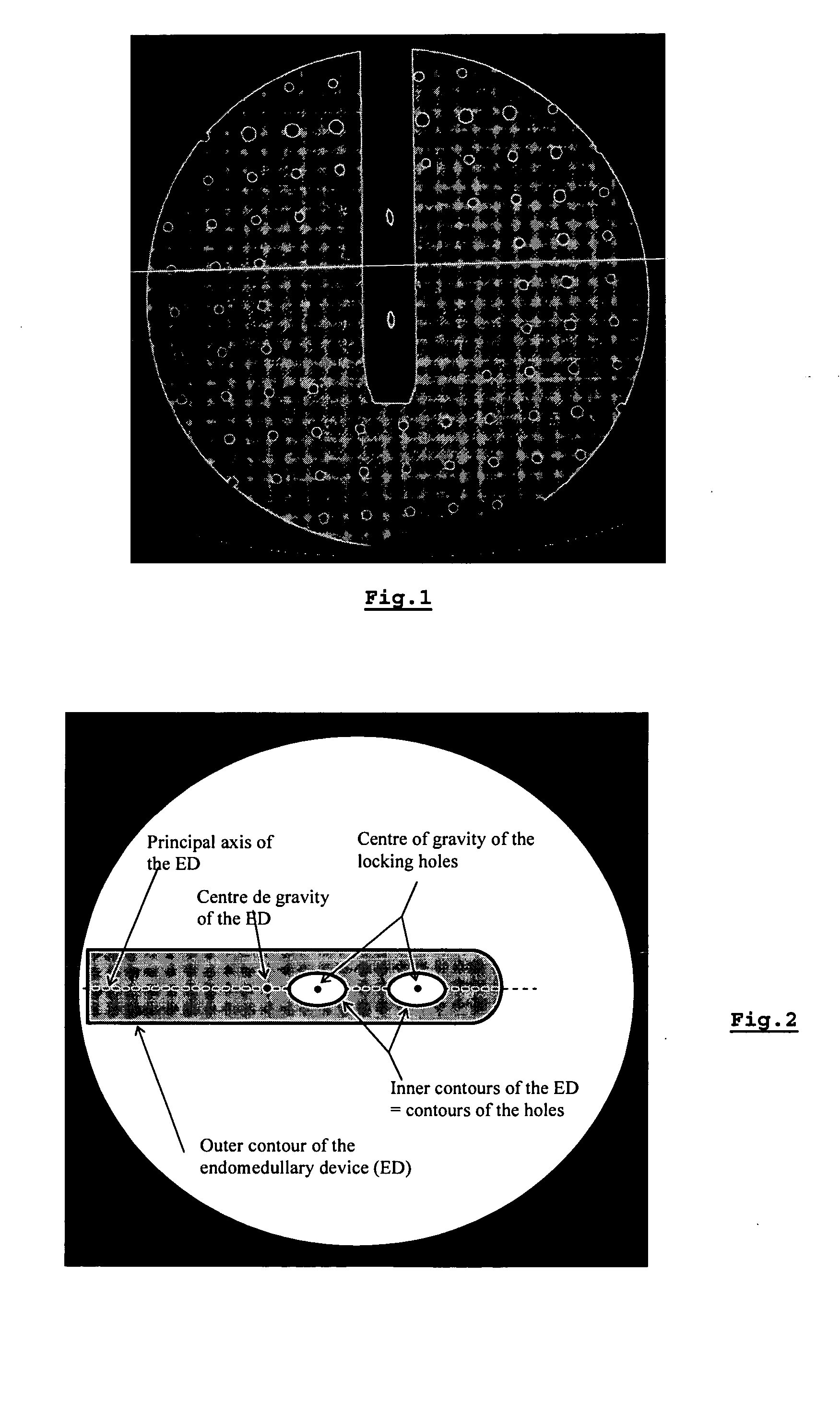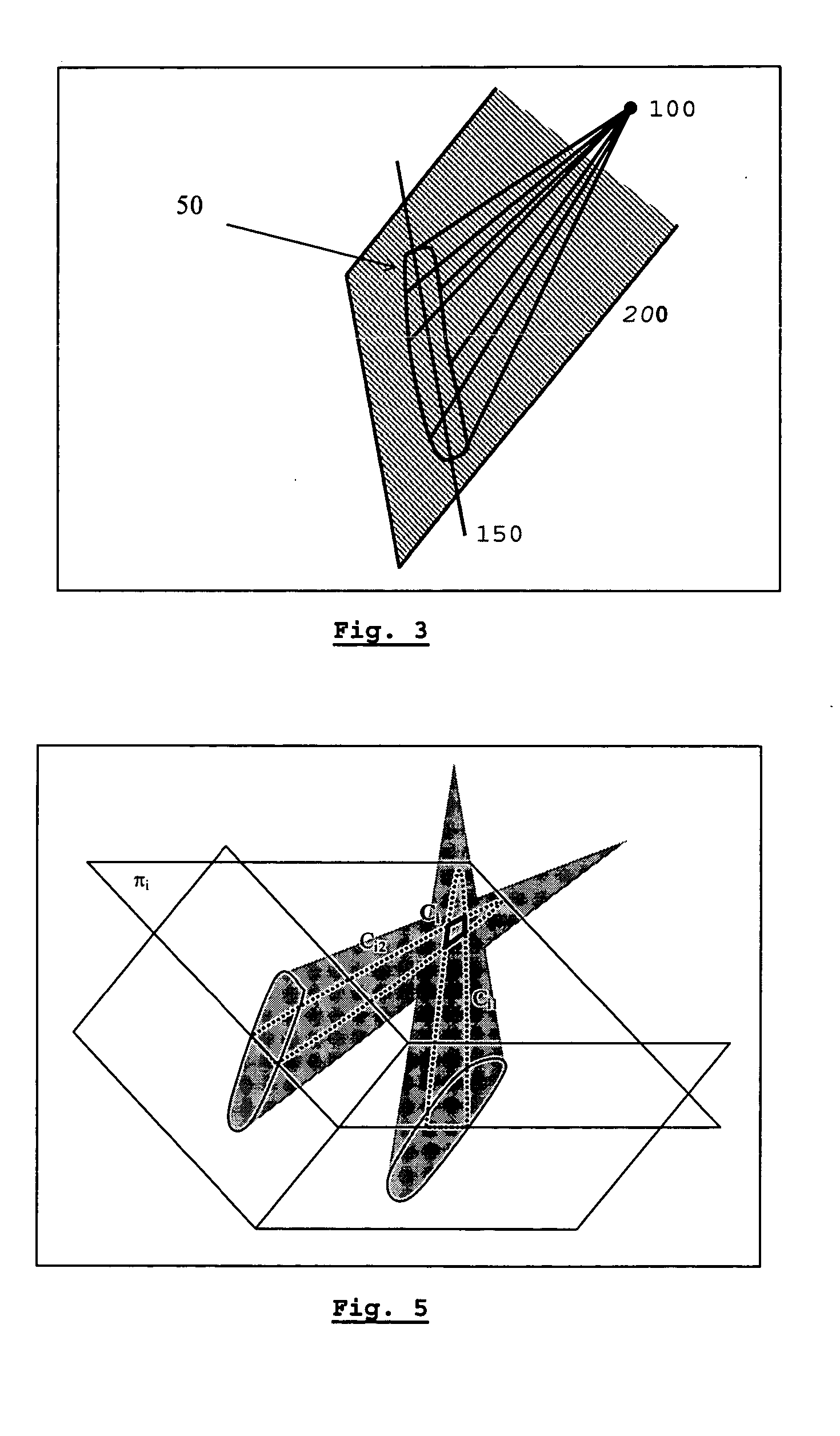Process for the acquisition of information intended for the insertion of a locking screw into an orifice of an endomedullary device
a technology of endomedullary device and distal orifice, which is applied in the field of process for the acquisition of information intended for the insertion of locking screw into the distal orifice of the endomedullary device, can solve the problems of inability to use the process for fitting the distal screw, the distal locking screw is not fitted, and the screw is not fitted
- Summary
- Abstract
- Description
- Claims
- Application Information
AI Technical Summary
Problems solved by technology
Method used
Image
Examples
example 1
Experimental Trials on a Single Nail
Several experimental trials of the navigation system were carried out. The experimental device adopted for each trial is described below.
A intramedullary nail was fixed to the operating table via its proximal part. The slot in the nail was oriented downwards, as during an actual operation (the patient being on his back, the concavity of the nail must be oriented downwards), the axes of the holes being approximately horizontal. The radiographic cassette holder was fixed to the brightness amplifier and the polycarbonate tray containing the balls of the grid was inserted thereinto. Two clamps were furthermore used to prevent any displacement of the grid due to a small gap existing between the latter and the holder. The radioscopic unit was installed, in order to allow the acquisition of views in which the distal locking holes of the nail appear in the region of the grid devoid of balls. A reference frame (a star tracked by the 3D locator) was fix...
example 2
Experimental Trials on a Dry Bone
A plastic femur was sawn in two transversely, and the distal fragment was bored using a drill. The distal end of the nail was inserted into this fragment over a length of about 10 cm.
A universal drilling motor fitted with a 5 mm diameter bit was used to drill the hole for the locking screw. A reference frame was fixed to the handle of the tool by means of nylon clamps. A piece of rubber inserted between the two elements prevented them from slipping. The tool was calibrated by locating three points using the pointer (FIG. 15), namely the end of the drill bit (1) and two diametrically opposed points located on the chuck of the tool (2-3). The axis of the drill bit was determined by the segment joining the first point to the mid-point between the two latter points. Apart from this, the experimental device was the same as that for the trials on just a nail.
It was found that, for 94% of the trials, the navigation system allowed the nail to be locked...
PUM
 Login to View More
Login to View More Abstract
Description
Claims
Application Information
 Login to View More
Login to View More - R&D
- Intellectual Property
- Life Sciences
- Materials
- Tech Scout
- Unparalleled Data Quality
- Higher Quality Content
- 60% Fewer Hallucinations
Browse by: Latest US Patents, China's latest patents, Technical Efficacy Thesaurus, Application Domain, Technology Topic, Popular Technical Reports.
© 2025 PatSnap. All rights reserved.Legal|Privacy policy|Modern Slavery Act Transparency Statement|Sitemap|About US| Contact US: help@patsnap.com



